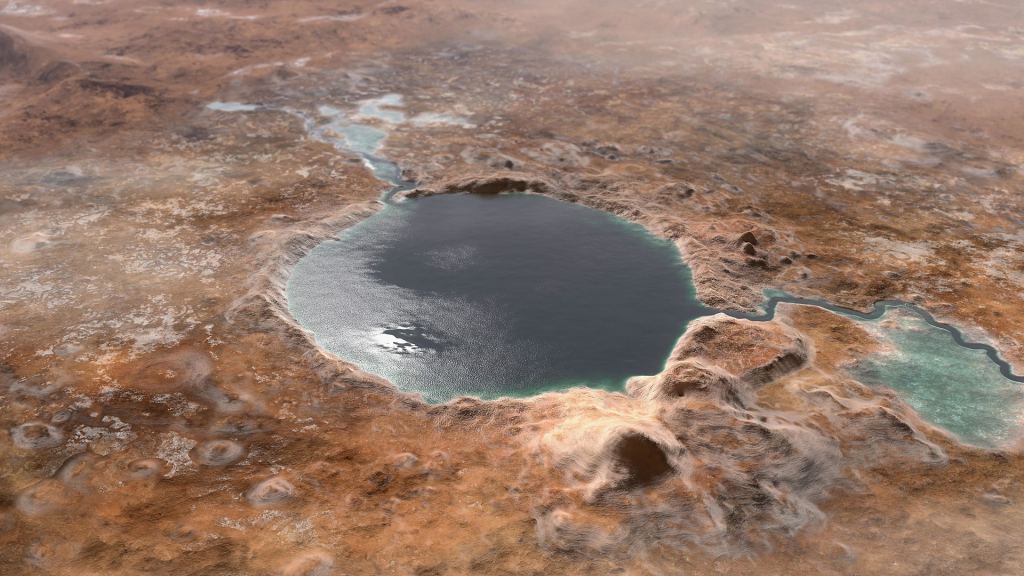The Ingenuity chopper on Mars is the little helicopter that just keeps on going. It's doing that, even as it takes on flights over some pretty tough ground on the Red Planet. On April 13, Ingenuity made its 50th flight of the mission, 45 more than it was originally scheduled to do.
During the April 13th trip, the little chopper flew 322.2 meters in 145.7 seconds. It also went up 18 meters—a new altitude record. At the end of the flight, Ingenuity settled down near Belva Crater. It's all an amazing achievement and the mission is ready to do more.
"Just as the Wright brothers continued their experiments well after that momentous day at Kitty Hawk in 1903, the Ingenuity team continues to pursue and learn from the flight operations of the first aircraft on another world," said Lori Glaze, director of the Planetary Science Division at NASA Headquarters in Washington.
Where to Next?
The next flight for the chopper is a "repositioning" trip to put it in the right place for the next set of explorations. Mission controllers are eyeing a region called "Fall River Pass", which is part of the Jezero Crater region. That's where Perseverance—Ingenuity's "parent" ship landed in February 2021.
It's all part of the continuing exploration of Jezero Crater. Planetary scientists think that billions of years ago, this crater was filled with water. As such, it may be a key place to look for signs of past life, probably microbial in nature. While Perseverance isn't equipped with life-detection instruments, it is perfectly designed to study the chemistry and geology of Mars's surface. It's been doing so since landing and has traveled more than 17.5 kilometers.
Its 51st flight (the repositioning) should be happening any time now. That trip should cover just over 180 meters in a period of 130 seconds. It, like Perseverance, is headed west and will be taking images along the way.
Ingenuity Surpasses its Role as a Tech Demo
The first helicopter on Mars really was supposed to be a demo and only fly a few times. But, it has soldiered on. This, despite facing some pretty adverse conditions. Dust storms coat its blades and solar panel. In the winter, it hibernated, and it continues to "brown out" during the night. Now that winter has passed, the Ingenuity can recharge more quickly. It will soon be flying over some pretty amazing terrains more frequently. It stays in touch with Perseverance via a Helicopter Base Station onboard its mother ship and uses auto navigation as it flies.
Ingenuity contains "off-the-shelf" components like smartphone processors and cameras. Its surprisingly hardy, much to the delight of its controllers. "When we first flew, we thought we would be incredibly lucky to eke out five flights," said Teddy Tzanetos, Ingenuity team lead at JPL. "We have exceeded our expected cumulative flight time since our technology demonstration wrapped by 1,250% and expected distance flown by 2,214%."
https://mars.nasa.gov/maps/location/?mission=M20&site=NOW Teddy Tzanetos at NASA’s Jet Propulsion Laboratory provides an update on the agency’s Ingenuity Mars Helicopter and discusses how it’s inspiring future aerial exploration of the Red Planet.Credits: NASA/JPL-CaltechDespite all the success, the chopper is showing signs of wear and tear. Its future flights and landings will challenge its capabilities, according to Tzanetos. "We have come so far, and we want to go farther," said Tzanetos. "But we have known since the very beginning our time at Mars was limited, and every operational day is a blessing. Whether Ingenuity's mission ends tomorrow, next week, or months from now is something no one can predict at present. What I can predict is that when it does, we'll have one heck of a party."
For More Information
NASA’s Ingenuity Mars Helicopter Completes 50th Flight
Mars Helicopter
 Universe Today
Universe Today

